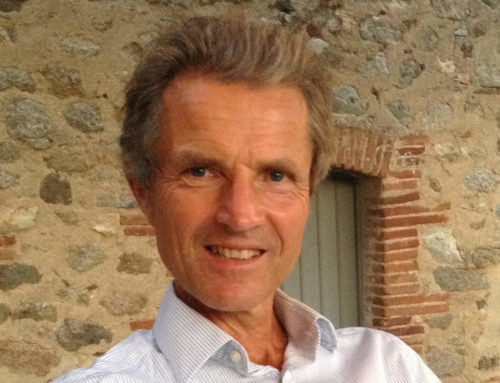Book review by David Lorimer
THE OXFORD HANDBOOK OF PSYCHOLOGY AND SPIRITUALITY
Edited by Lisa J. Miller
Oxford, 2012, 634 pp.
ISBN: 978-0-19-935734-5
This is a landmark volume, especially given the fact that it has been published by one of the world’s leading university presses. It forms part of the Oxford Library of Psychology, a series designed to review major sub-disciplines with breadth, comprehensiveness and exemplary scholarship; it also combines a searchable online facility. Significantly, though, only two of over 60 contributors from outside the United States.
In her introduction, Lisa Miller remarks that the handbook is at the cutting edge of an expanded psychology that directly addresses the broadened set of ontological assumptions and a view that spirituality is fundamental to the human constitution. In one sense, it continues the work of William James after a long diversion by taking the human mind as part and parcel of a living spiritual reality, which leads to an expansion of psychology ‘by a Copernican magnitude’ in the direction of postmaterialism, ‘a science beyond the limitations of exclusive ontological materialism and mechanism.’ This takes consciousness as fundamental and the fabric of reality.
Miller argues that postmaterialist spiritual psychology can live alongside work conducted from a materialist perspective, adding that ‘materialist science merely needs to make its assumptions clearer as it sustains a vital place abreast work conducted from other ontological contexts’. The word ‘merely’, though, is a big ask, even if the limitations of materialism are becoming more evident, at least to authors in this volume. Significantly, the author organised a student lecture for some of the contributors at Columbia University Teachers College and when they entered the largest available theatre, they found it full to overflowing. Later, students remarked that ‘this is the [postmaterialist] education that we want; the old scientific models feel dead to us… I already assume a spiritual reality, most of us do, so now what? We want to learn from this perspective.’ (p. 3) Miller concludes that the science in this handbook ‘shows our universe to be alive, guiding and so very sacred. The scientific perspective that all consciousness is one and sacred may reawaken our appreciation of living beings around us, all life.’
The volume consists of ten parts with 38 essays. There are sections on epistemological and ontological assumptions in history and culture, personality and social psychology, spiritual development in relation to family and culture, prayer and intentionality, mindfulness therapies, physical health and spirituality, positive psychology and spirituality, the brain and spiritual experience, then sacred consciousness and healing in terms of a postmaterial spiritual science. Each chapter contains an abstract, coverage of its area, suggestions for further research, and extensive references. All this expands and redefines the philosophy and psychology of spirituality and religion. One of the essays in the first part is very useful in spelling out theoretical and epistemological foundations for the field, with an emphasis on methodological, epistemological, ethical, and ontological metaphysical presuppositions. This is an excellent analytical piece about what the authors call positivistic naturalism, and it is interesting to note that the corresponding ethical assumption is primarily instrumental.
The essay on good and evil in religion contains some interesting work on core virtues, moral foundations and value categories across a number of different traditions, contrasting self-transcendence with self-enhancement, love with hate, selfishness with service, and empathy with self-absorption. The paper on religion and altruism could have brought in the seminal work of Pitirim Sorokin written up in The Ways and Power of Love in the 1950s. In the context of my other work on character education, I found the essay on spiritual development in adolescence of great interest, as well as another on spirituality and positive youth development. This last essay provides a framework of developmental assets for young people and a useful definition of spiritual development in terms of connectedness, meaning, purpose and contribution. Clinicians will find a great deal of interest in the volume, including essays on spiritually sensitive psychotherapy, spiritual aspects of Jungian analytical psychology and the transformation of Eastern meditative disciplines into Western psychotherapy. There is good coverage of positive psychology and spirituality as well as the role of spirituality in relation to resilience and positive emotions.
The section on the brain and spiritual experience contains essays by Andrew Newberg on transformation in brain structure and spiritual experience, neuroimaging and spiritual practice by Mario Beauregard and the psychology of near death experiences and spirituality by Bruce Greyson. All three are well worth close reading as they are the result of many years of research and reflection. Bruce refers to the NDE as posing an inescapable challenge to the materialistic model of mind-brain identity by asking how ‘complex cognition, sensory perception, and memory can occur under conditions such as cardiac arrest in which physiological models of mind deem it impossible. (p. 525)
In the final section, there are contributions from Stefan Schwarz and Larry Dossey nonlocality and healing, then an extensive and quite technical paper by William Tiller on knowledge, intention and matter, where he distinguishes between the knowledge pathway of logos as physical science and mythos for what he calls psychoenergetic science. He draws on great deal of research, adding information and consciousness to the physical equation of mass and energy. Gary Schwartz provides a thorough analysis of materialism and the mind-brain problem and evidence pointing towards the separation of mind from brain in relation to experiments and experiences for survival. A greater spiritual reality with consciousness as the key, he argues, will require a revision and expansion of psychological definitions of mind, its operation, limitations and potentials – probably in terms of building on the William James filter model. However, Gary is also aware that the politics and indeed the social psychology of science makes progress in this direction challenging. Amit Goswami covers some of the same ground, highlighting paradoxes and anomalies of materialist science, concluding that scientific materialism is not a valid metaphysics for science before advancing his own view of a new science within consciousness. Ethics, he states, will be based on a metaphysics that fundamentally recognises the interconnectedness of all humans, which I myself argued in my book Whole in One (1990), shortly to be republished as Resonant Mind.
In her conclusion, Lisa Miller returns to some of the themes raised in her introduction relating to a broadening of ontology, and articulating a postmaterial view where human science sees human mind as an extension of the fabric of universal consciousness – a ‘consciousness-driven science’. She writes that the fact that ‘consciousness exists in states other than matter expands our notion of the human brain and is the linchpin of a post-material psychology.’ (p. 612) Consciousness is in us, through us and around us. Taken as a whole, the volume is a powerful argument for an expanded ontology in psychology, and I hope it will be avidly read by students and younger psychologists in the field so as to encourage them to become part of the necessary expansion and transformation of the discipline. General readers will also find a great deal of valuable material, although they will be more drawn to particular essays in terms of their own special interests. This is truly a landmark and potentially revolutionary volume that deserves the widest possible readership.
Buy The Oxford Handbook of Psychology and Spirituality here.

